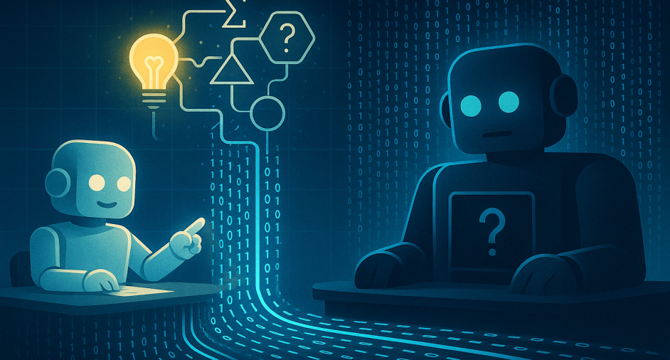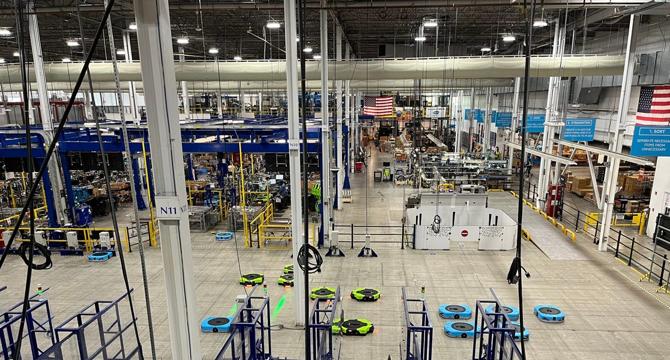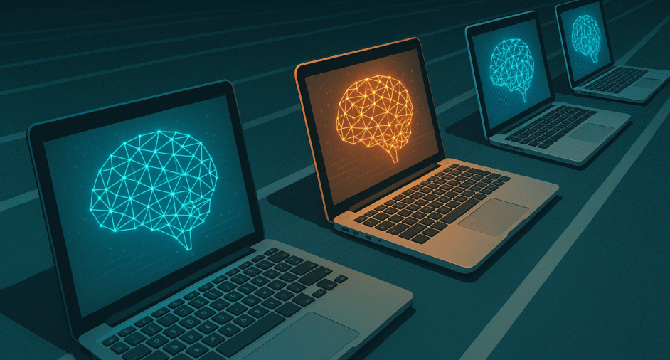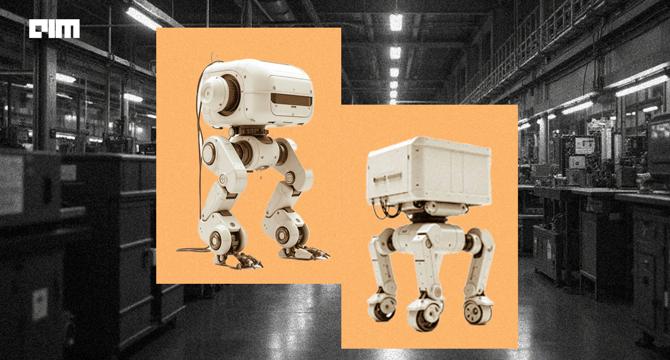Robotics News
Unite
1M
209

Image Credit: Unite
GridCARE Emerges from Stealth with $13.5M to Solve AI’s Power Crisis with Generative Grid Intelligence
- GridCARE, a grid intelligence company, has come out of stealth mode with a $13.5 million seed round to address AI's power challenges.
- The funding was led by Xora, a tech venture firm, with support from climate, AI, and infrastructure investors.
- The surge in global AI market growth is straining power grids, especially due to data centers' rising electricity demands driven by AI.
- GridCARE's platform uses Generative AI to optimize time-to-power for developers, allowing faster deployment of AI infrastructure.
- It acts as a connection between utilities and hyperscalers, simplifying grid access processes and creating new revenue streams for utilities.
- GridCARE's team has expertise in energy, AI, and sustainability, aiming to enhance grid flexibility without new fossil fuel infrastructure.
- Utilities like PGE and PG&E are adopting GridCARE for smarter infrastructure planning to cope with AI's energy demands.
- The company's concept of Power Caching promotes localized energy generation near AI data centers to reduce grid stress.
- Backed by investors like Breakthrough Energy, GridCARE aims to revolutionize grid access and scale with its generative AI platform.
- GridCARE's focus on reimagining grid power delivery is crucial for the scalability of AI models and the future of AI innovation.
Read Full Article
12 Likes
Unite
1M
351

Image Credit: Unite
Bito Raises $5.7M to Supercharge Agentic AI Code Reviews and Accelerate Enterprise Dev Velocity
- Bito has raised a $5.7 million seed extension to advance its agentic AI platform for code review, bringing its total seed funding to $8.8 million.
- The funding round was led by Vela Partners and included support from NextView Ventures, Maxitech Ventures, Eniac Ventures, and others.
- Bito focuses on addressing the critical bottleneck of code review at scale in the development lifecycle.
- They emphasize Agentic AI, which operates as autonomous agents capable of reasoning and decision-making in code review.
- Bito's AI Code Review Agent actively plans, critiques, and adapts reviews to align with organizational best practices and coding styles.
- The platform reviews over 10,000 pull requests weekly and has shown significant speed and quality improvements for organizations like Gainsight and PubMatic.
- Bito's integration encompasses popular platforms like GitHub, GitLab, Bitbucket, and soon Azure DevOps, supporting over 50 programming languages.
- Built with security in mind, Bito is SOC 2 Type II certified, provides static code analysis, security scanning, custom review rules, and detailed PR summaries.
- The leadership team at Bito includes individuals with a strong background in SaaS, adtech, and enterprise infrastructure.
- Bito’s focus on AI-native code creation and review offers a path forward for companies seeking productivity, code integrity, and reduced technical debt.
Read Full Article
21 Likes
The Robot Report
1M
246

Foxlink and Luminys build a strategy for smart security and robotics
- Luminys Systems Corp. and its parent company Foxlink unveiled 'Foxlink’s Integrated Strategy in Smart Security and Robotics' at GTC Taipei 2025.
- The robotic dog developed by Foxlink utilizes NVIDIA Edge AI with features like facial recognition, modular sensing, autonomous navigation, and NVIDIA technologies.
- The robot-based smart manufacturing by Foxlink integrates functionalities such as facial recognition, modular sensors, SLAM navigation, virtual parkour training, large language model integration, and more.
- Foxlink, Luminys, and SYNC ROBOTIC form a vertically integrated ecosystem with contributions in AI security, infrastructure, development, and deployment for global market demands.
Read Full Article
14 Likes
Discover more
Gizchina
1M
132

Image Credit: Gizchina
World’s First Humanoid Robot Boxing Competition Held in China
- The world’s first humanoid robot boxing championship, named the 'Mecha Fighting Series,' took place in Hangzhou, China, showcasing advancements in robot technology in power, stability, and movement.
- Robots engineered by Unitree Robotics engaged in solo and team matches guided by human players, displaying actions like punching, dodging, and crashing, providing entertainment and humor to the audience.
- The Unitree G1 robot, standing at 1.32 meters, exhibited superior mobility, balance, and motor control, setting the stage for a future where robots could be integrated into various aspects of life, including sports and exhibitions.
- The event highlighted the potential of human-machine collaboration and hinted at a future where robots may play significant roles beyond industrial and laboratory settings, potentially becoming commonplace even in recreational environments.
Read Full Article
7 Likes
Unite
1M
401

Image Credit: Unite
How Phi-4-Reasoning Redefines AI Reasoning by Challenging “Bigger is Better” Myth
- Microsoft's Phi-4-reasoning challenges the assumption that advanced AI reasoning requires very large language models, offering a data-centric alternative with its 14-billion parameter model.
- Traditionally, reasoning in AI was linked to larger model sizes, leading to a focus on building massive reasoning engines based on extensive computing power.
- The rise of data-centric AI emphasizes the importance of data quality over sheer model size, advocating for improved training data to enhance AI performance.
- The data-centric approach focuses on optimizing datasets for training smaller, powerful AI models, demonstrating effectiveness in tasks like language understanding and math.
- Phi-4-reasoning showcases a breakthrough strategy by training smaller reasoning models through supervised fine-tuning with high-quality prompts and reasoning examples.
- By carefully curating training data and employing reinforcement learning on math problems, Phi-4-reasoning achieves advanced reasoning capabilities comparable to larger models.
- Phi-4-reasoning's success highlights the efficacy of a data-centric approach, challenging the notion that massive computational power is essential for advanced reasoning in AI.
- The model's superior performance on various tasks showcases the potential of training smaller models on refined datasets for efficient AI reasoning capabilities.
- Phi-4-reasoning's approach underscores the importance of investing in data quality and curation over simply increasing model size, offering a more accessible path to advanced reasoning AI.
- This shift in AI reasoning model development towards data quality and curation may democratize AI by making advanced reasoning capabilities available to a wider range of developers and organizations.
- As AI evolves, the lessons from Phi-4-reasoning suggest that future progress lies in combining model innovation with smart data engineering for more efficient and specialized AI applications.
Read Full Article
24 Likes
Eu-Startups
1M
255

From video games to urban planning – British SpAItial emerges from stealth with €11.4 million to develop their 3D modelling AI
- London-based startup SpAItial has emerged from stealth mode with a €11.4 million Seed round to develop their 3D modelling AI.
- SpAItial is focused on creating AI models that understand and generate 3D environments, with the aim of bridging virtual and physical worlds.
- Their Spatial Foundation Models (SFMs) enable the generation of photorealistic 3D worlds and have applications in entertainment, robotics, digital twinning, and urban planning.
- Backed by investors like Earlybird Venture Capital and Speedinvest, SpAItial plans to expand its team and develop advanced physics capabilities for its AI models.
Read Full Article
15 Likes
Insider
1M
319

Image Credit: Insider
Amazon's sprawling warehouse robot factories offer a glimpse into modern US manufacturing
- Amazon manufactures and tests its Hercules and Proteus robots inside a massive facility in North Reading, Massachusetts.
- Madeline Stone / BIBusiness Insider recently toured two facilities where Amazon designs and manufactures its robots.
- The facilities provide an inside peek at what modern manufacturing looks like.
- Amazon employees in North Reading build robots to support the company's network of fulfillment centers.
- The facility showcases a modern view of US manufacturing, aligning with efforts to bring manufacturing back to the US.
- Amazon Robotics not only manufactures robots but also invests heavily in robotics, with potential savings estimated at $10 billion a year.
- Both the North Reading and Westborough facilities have corporate offices and research labs, fostering collaboration between engineers and manufacturing employees.
- Around 300 people work on physical tasks involved in building and maintaining Amazon's fleet of over 750,000 robots.
- Amazon emphasizes attributes like a good attitude, problem-solving skills, and curiosity in its hiring for manufacturing roles.
- Amazon Robotics' work focuses on physical AI, aiming for collaborative robots that work alongside humans in fulfillment centers.
Read Full Article
19 Likes
Medium
1M
351

What drives our passion for Robotics?
- The passion for robotics is primarily driven by the potential for increased efficiency, precision, and cost savings in various industries such as electronics, pharmaceuticals, and agriculture.
- Robots automate repetitive tasks, reduce operational costs, and improve product quality, leading to economic growth and job creation in high-skilled fields like tech and engineering.
- The growing robotics market, valued at $76 billion in 2023, is expected to reach $218 billion by 2030, with significant contributions to sectors like healthcare and logistics.
- Advances in sensors, actuators, and control systems have propelled progress in robotics, enabling the development of sophisticated robots like the Atlas humanoid robot by Boston Dynamics.
- Perception, the ability of robots to interpret their environment, remains a crucial aspect of robot autonomy, with challenges in achieving human-like intelligence in areas such as multimodal recognition and contextual awareness.
- Progress in AI, particularly in deep learning, has led to improvements in perception systems, bridging the gap between physical and mental abilities of robots, but further advancements are needed.
- Challenges in robotics lie in developing accurate and efficient perception systems that can seamlessly integrate robots into diverse environments like homes and workplaces.
- Global readiness in sensor technology, computational infrastructure, and ongoing advancements in AI research provide optimism for rapid breakthroughs in general robotics that can revolutionize various industries.
- Investors like Nanostar VC seek startups with strong technical capabilities in tackling challenging perception problems to drive innovation in the robotics sector.
- The future of robotics holds promise with ongoing advancements in learning systems and breakthrough technologies, paving the way for transformative developments in general robotics.
- As expressed by Nvidia's CEO Jensen Huang, a pivotal moment in general robotics, akin to the chatGPT revolution, is on the horizon, supported by evolving technologies and research progress.
Read Full Article
21 Likes
Unite
1M
0

Simon Poghosyan, Founder and CEO of GSpeech – Interview Series
- Simon Poghosyan is the founder and CEO of GSpeech, a web-based AI platform that converts text into audio in over 70 languages, aiming to make online content more accessible.
- GSpeech generates around 200 million characters of audio monthly, used in over 70 countries, with customizable audio players serving over 200,000 plays monthly.
- The platform is easy to integrate, requiring just a single line of code, supporting inclusivity and engagement for creators, educators, and businesses.
- GSpeech evolved from aiding visually impaired users to offering a full-featured AI text-to-speech solution with multilingual support and detailed usage statistics.
- Challenges in developing the GSpeech Cloud Console included designing scalable architecture, real-time translation, and customizable player views.
- Maintaining voice quality across 70+ languages involves regularly optimizing text-to-speech models and integrating new voice vibes for varied expression.
- GSpeech leverages AI and machine learning for lifelike voice synthesis with customizable voice styles and TTS aliases for accurate pronunciation.
- Voice tuning, pitch control, and playback customization are vital for user engagement, with GSpeech Studio empowering professional-grade audio creation.
- GSpeech's strategies ensure plug-and-play integration with platforms like WordPress, prioritizing simplicity, compatibility, and scalability across devices.
- A major milestone for GSpeech was generating 1 billion characters of AI audio, impacting global accessibility and receiving positive feedback from various users.
Read Full Article
Like
Unite
1M
269

Image Credit: Unite
The AI Arms Race and Its Potential Impact on Businesses
- The AI arms race is a high-velocity competition driving innovation across all business sectors.
- Tech giants, startups, and nation-states are fiercely competing in AI development and deployment.
- The rapid advancement of AI is reshaping markets and threatening traditional business models.
- Businesses must adapt to the accelerated innovation cycles driven by AI-native competitors.
- AI is automating tasks, leading to shifts in the workforce dynamics and job roles.
- Companies are increasingly dependent on AI providers, creating strategic vulnerabilities.
- Ethical AI practices are becoming a key brand differentiator for businesses.
- The scramble for AI talent is intensifying, posing challenges for industries trying to modernize.
- Businesses are advised to audit processes, educate teams, manage risks, and prioritize interoperability in the AI era.
- Success in the AI arms race requires businesses to reimagine strategies and embrace transformation.
Read Full Article
16 Likes
Unite
1M
280

Image Credit: Unite
How to Stop AI Depicting iPhones in Bygone Eras
- AI image generators often depict historical scenes inaccurately by incorporating modern elements, like smartphones and laptops, into bygone eras.
- Gemini multimodal AI model faced criticism for generating demographically improbable WWII figures, highlighting challenges in historical context representation.
- Entanglement in AI models leads to inaccuracies, as they associate modern objects with historical contexts due to training data patterns.
- Research from Switzerland shows AI frameworks excel in creating photorealistic historical figures but struggle with contextual accuracy.
- AI models tend to mix timeless activities with modern technology in historical representations, blurring the line between eras.
- Smartphones are particularly challenging to separate from photography contexts in AI-generated historical depictions.
- A new dataset, HistVis, and metrics like Visual Style Dominance and anachronism detection were developed to assess AI-generated historical imagery.
- AI models show stylistic defaults by associating historical periods with specific visual styles, impacting the accuracy of generated images.
- Anachronisms, such as modern technology in historical settings, are common in generated images, with SD3 showing the highest rate.
- AI models often overrepresent gender and race, introducing biases in historical depictions compared to baseline estimates.
- Research suggests that AI models prioritize aesthetic styles over nuanced historical understanding, leading to one-dimensional portrayals of history.
Read Full Article
16 Likes
Analyticsindiamag
1M
456

Image Credit: Analyticsindiamag
Faceless Robots are Taking Over the Future of Work
- The real revolution in robotics is happening in industrial settings such as factory floors and warehouses, driven by labor shortages and the need for resilient operations.
- Industrial robots, not humanoid machines, equipped with AI, vision, and mobility technologies are enhancing precision, efficiency, and supply chain resilience.
- These purpose-built systems are seamlessly integrating into production lines, collaborating with human workers, and adapting to dynamic environments.
- Industrial robots, including cobots and AMRs, are seeing significant global adoption and market growth projections, outpacing other segments.
- Countries like South Korea and China are experiencing a rise in robot density, pointing towards a global shift in labor and automation interactions.
- Modern robots are powered by AI, vision systems, and mobility tech, enabling them to handle variability and adapt to dynamic manufacturing settings.
- Robots equipped with advanced sensors and AI algorithms are transforming automation projects by learning tasks through experience-based learning.
- Robots are expanding beyond manufacturing into areas like warehouses, healthcare, and surgery, improving logistics, efficiency, and workplace safety.
- Investors are heavily investing in logistics and industrial robotics, with companies like ABB and FANUC developing robots for various industries.
- The future of robotics is driven by precision arms, sensors, and AI that enhance productivity and efficiency, reflecting a shift towards function over form.
Read Full Article
26 Likes
The Robot Report
1M
114

ABI Research finds 53% of manufacturers are adopting robots for quality improvement
- 53% of global manufacturers are in the early stages of adopting new industrial robot hardware, with 28% already having deployed robots within their facilities.
- Manufacturers believe that industrial robots are crucial to production strategies for improving quality levels, with 40% listing adoption of robotics as a priority for quality improvement.
- 19% of manufacturers plan to consider adopting industrial robots in the next five years, while 33% are contemplating adoption of collaborative or mobile robots within the same timeframe.
- Survey respondents highlighted the barriers to robotics adoption as a lack of expertise, insufficient time for implementation, and a shortage of skills needed to use new technologies.
Read Full Article
6 Likes
Arduino
1M
383

YouTuber builds robot to make boyfriend take out the trash
- YouTuber CircuitCindy built a robotic trashcan to make her boyfriend take out the trash after he consistently procrastinated on the chore.
- The robot is equipped with sensors including ultrasonic sensors, PIR sensors, and an infrared sensor to detect when the trash can is full and follow a person with body heat to urge them to empty it.
- The robot plays pre-recorded passive-aggressive comments through an MP3 player until the trash is taken out, serving as a creative way to incentivize completing the task.
- Though the robot presents a humorous and inventive approach to dealing with household chores, it faces practical challenges like difficulty in distinguishing between Cindy and her boyfriend, potentially limiting its long-term utility.
Read Full Article
23 Likes
For uninterrupted reading, download the app